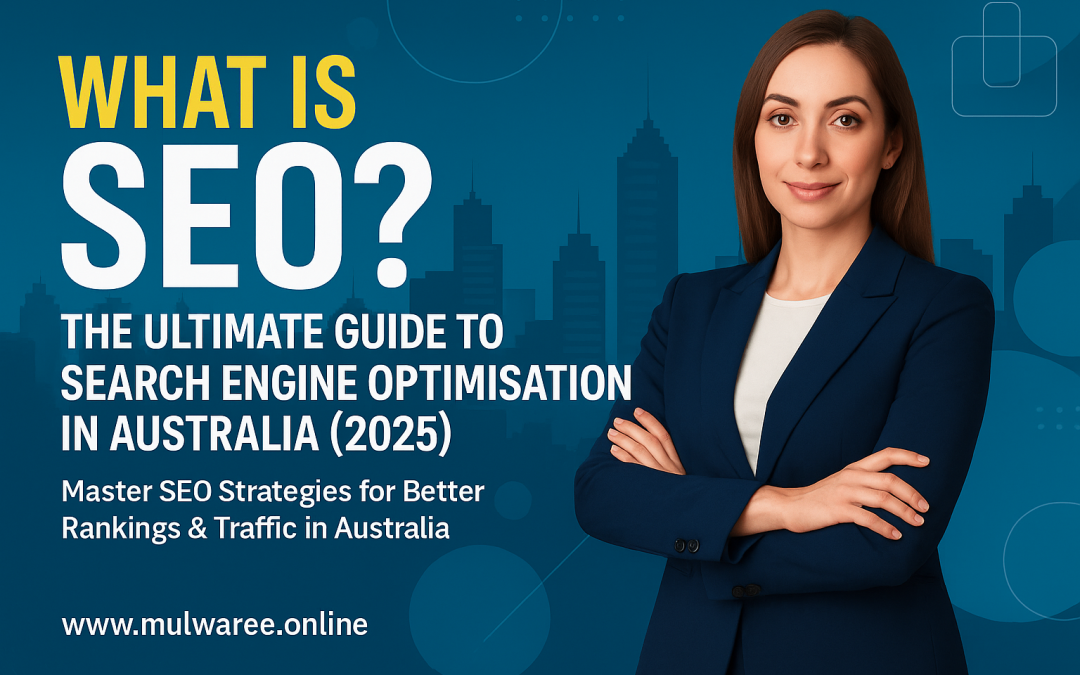Implementing a well-rounded SEO strategy is not an overnight endeavour. It requires patience, consistent effort, and a willingness to adapt as search engines and user behaviour evolve.
However, the payoff sustained organic visibility, increased brand credibility, higher conversion rates and long-term cost efficienc makes SEO one of the most valuable marketing channels an Australian business can invest in.
Search engine optimisation (SEO) is one of the most effective digital marketing strategies for businesses looking to increase their visibility online.
Whether you’re a small business, a national eCommerce brand, or a service provider in a regional town, SEO plays a vital role in helping your audience find you on Google and other search engines.
This blog is your ultimate guide to understanding SEO, how it works, and how it can help your business grow.
Whether you’re just beginning your journey or looking to fine-tune an existing strategy, this comprehensive guide offers actionable insights that align with how users search today and how search engines are evolving.
Key Takeaways
- Foundational Understanding: Know how search engines crawl, index and rank content.
- Comprehensive On-Page & Technical Optimisation: Invest in fast loading times, mobile responsiveness, secure connections and structured data
- Authoritative Off-Page Signals: Prioritise high-quality backlinks, genuine brand mentions and positive online reviews.
- Local & E-Commerce Nuances: Tailor your tactics to your specific business model—whether you’re a local café seeking to rank for “Melbourne brunch spots” or an online retailer targeting “affordable men’s jackets Australia.”
- Measurement & Iteration: Use tools like Google Analytics 4, Search Console, Ahrefs and Screaming Frog to track performance, identify gaps and refine your strategy.
- Avoid Pitfalls: Steer clear of black hat tactics, duplicate content, mobile neglect and spammy backlinks.
What is SEO?
SEO, short for Search Engine Optimisation, is all about helping search engines like Google and Bing understand your website’s content and making sure it shows up when people are searching for what you offer.
Whether you’re selling products, offering professional services, or sharing expert advice, SEO is what connects your website with the right audience at the right time.
The main goal? To get your website ranking on page one of the search results for keywords that matter to your business. Why? Because that’s where your ideal customers are and that’s how you drive quality traffic to your site.
SEO is a core part of digital marketing and it applies to any website, no matter the industry.
It improves your site’s visibility, credibility, and ultimately, your bottom line. The more visible your pages are in search engines, the more likely people are to find and click on them simply as that.
But SEO in 2025? It’s not what it used to be.
Technology keeps moving forward and SEO evolves right along with it. The way websites are built, how they’re accessed (hello, smartphones and smart speakers), and even how search results are displayed (think AI-generated summaries and zero-click answers) it’s all changing rapidly.
Today, a “search” might be typed into a desktop browser, spoken to a smart home device, or tapped on a mobile screen and increasingly, users may not even need to click through to your site because search engines are now pulling key information directly into the results page.
This guide is your starting point to understand what SEO is in today’s fast-changing digital world.
We’ll walk you through the essentials of what SEO involves, why it’s more important than ever in 2025, and how to keep learning and improving.
Importance of SEO in Digital Marketing
In today’s digital era, over 93% of online experiences begin with a search engine (BrightEdge, 2024). When potential customers enter a query, the top three results typically garner the lion’s share of clicks.
A well-executed SEO strategy ensures that your website is not only discovered but also perceived as a credible, authoritative source of information or service.
SEO goes hand-in-hand with other digital marketing channels such as pay-per-click (PPC) advertising, social media and content marketing—creating a holistic ecosystem that amplifies your brand’s visibility and authority.
Benefits of SEO for Businesses
Targeted Traffic: SEO brings in users who are actively searching for what you offer, making them more likely to convert than generic traffic.
- Long-Term ROI: Unlike paid ads where traffic stops once you halt spending, well-optimised pages continue to rank and attract visitors over time.
- Credibility & Trust: High-ranking pages are often seen as more trustworthy. A solid SEO foundation positions you as an expert in your industry, building trust with potential customers.
- Cost-Effectiveness: While SEO involves upfront investment (e.g., engaging an experienced agency or dedicating internal resources), the ongoing cost per click is essentially zero.
- Competitive Advantage: In competitive industries—say, SEO services in Melbourne or e-commerce in Brisbane—outdoing rivals in search rankings can capture market share.
- Enhanced User Experience: Effective SEO practices often overlap with initiatives that improve site speed, mobile friendliness, and intuitive navigation—all of which benefit your users.
By laying this foundational understanding, we can now dive deeper into the mechanics of search engines, examine the core components of SEO, and craft a roadmap for achieving sustained online success.
How Search Engines Work
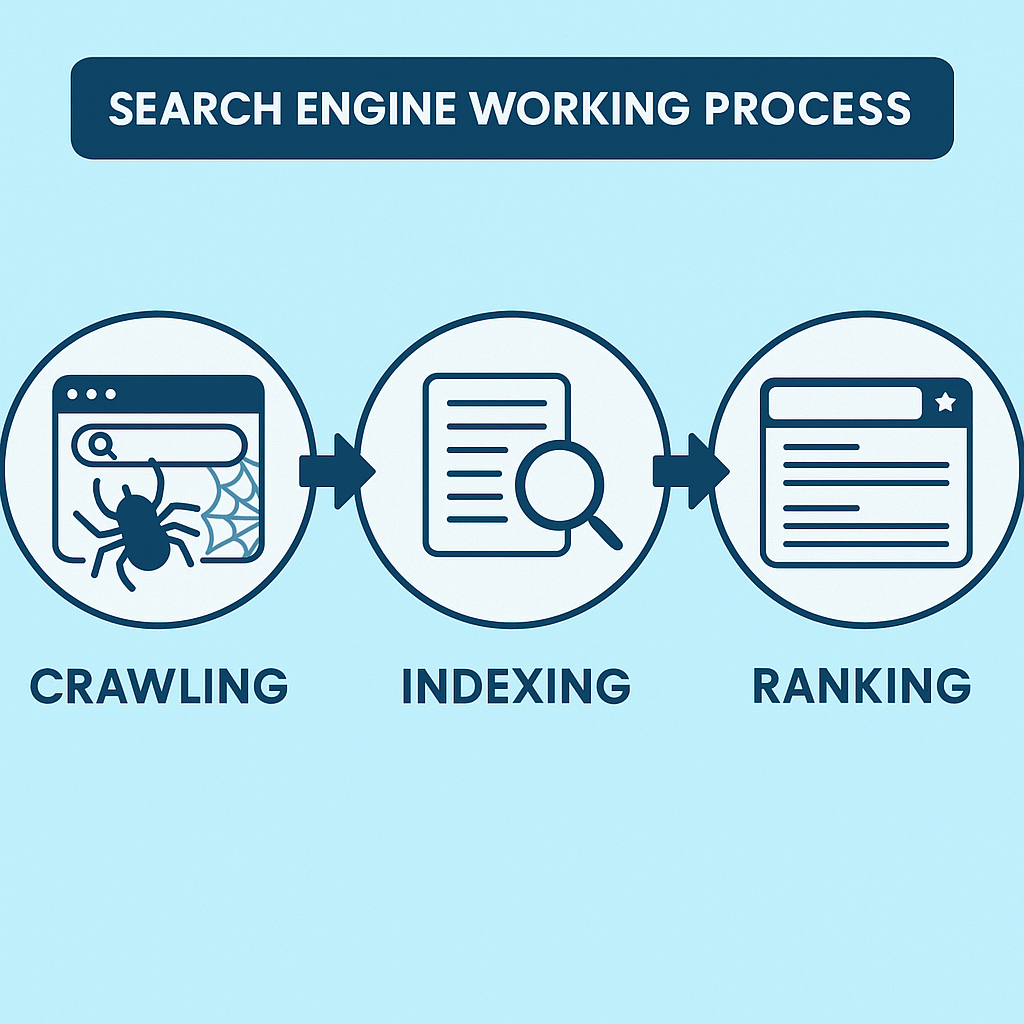
To build an SEO strategy that truly works, you first need to understand the inner workings of search engines.
Although Google, Bing and other engines guard much of their algorithmic secrets, we do know the three primary processes they use to serve results: crawling, indexing and ranking. Each step has distinct best practices associated with it.
Crawling
Search engines deploy automated programs known as “bots” or “spiders” to scan the web. These bots follow links from one page to another, discovering new content and revisiting existing pages.
If your website’s architecture is convoluted or lacks effective internal linking, certain pages might not be crawled, and therefore cannot be indexed or ranked.
Indexing
Once a page is crawled, the search engine attempts to interpret its content. This involves analysing text, images, videos, and other media, then storing a snapshot of the page in a giant database known as the index.
Pages with “noindex” tags or disallowed via robots.txt will not be added to the index. Proper use of these directives helps control which pages should or shouldn’t appear in search results.
Ranking
When a user enters a query, the search engine sifts through its index to find the most relevant, high-quality pages. Using hundreds of ranking factors (Google’s search quality rater guidelines hint at many of these), it orders these results based on relevance, authority, and user experience signals.
Factors such as page load speed, mobile usability, content depth and freshness, backlink profile, and even user engagement metrics (e.g., click-through rate, dwell time) can influence where your page appears.
Search Engine Algorithms & Ranking Factors
Core Algorithms
Google’s hummingbird, penguin, panda updates and subsequent algorithmic changes have shaped the modern search landscape. While the precise formulas remain secret, we know Google values:
- Content Relevance & Quality: Content must match user intent accurately and provide comprehensive, well-structured information.
- Backlink Profile: High-quality, relevant backlinks signal trustworthiness and authority.
- Technical Health: Pages should load quickly, be mobile-friendly and have a secure connection (HTTPS).
- User Experience (UX): Metrics like low bounce rate, high time on page and easy navigation all send positive signals.
- User Intent
Search engines now place a heavy emphasis on understanding the meaning behind queries. Rather than simply matching keywords, they aim to satisfy the user’s underlying need—be it informational, navigational, transactional or commercial investigation. Ensuring your content aligns with the intended user intent is crucial for ranking in 2025 and beyond, especially with the rise of AI-driven results (Answer Engine Optimisation).
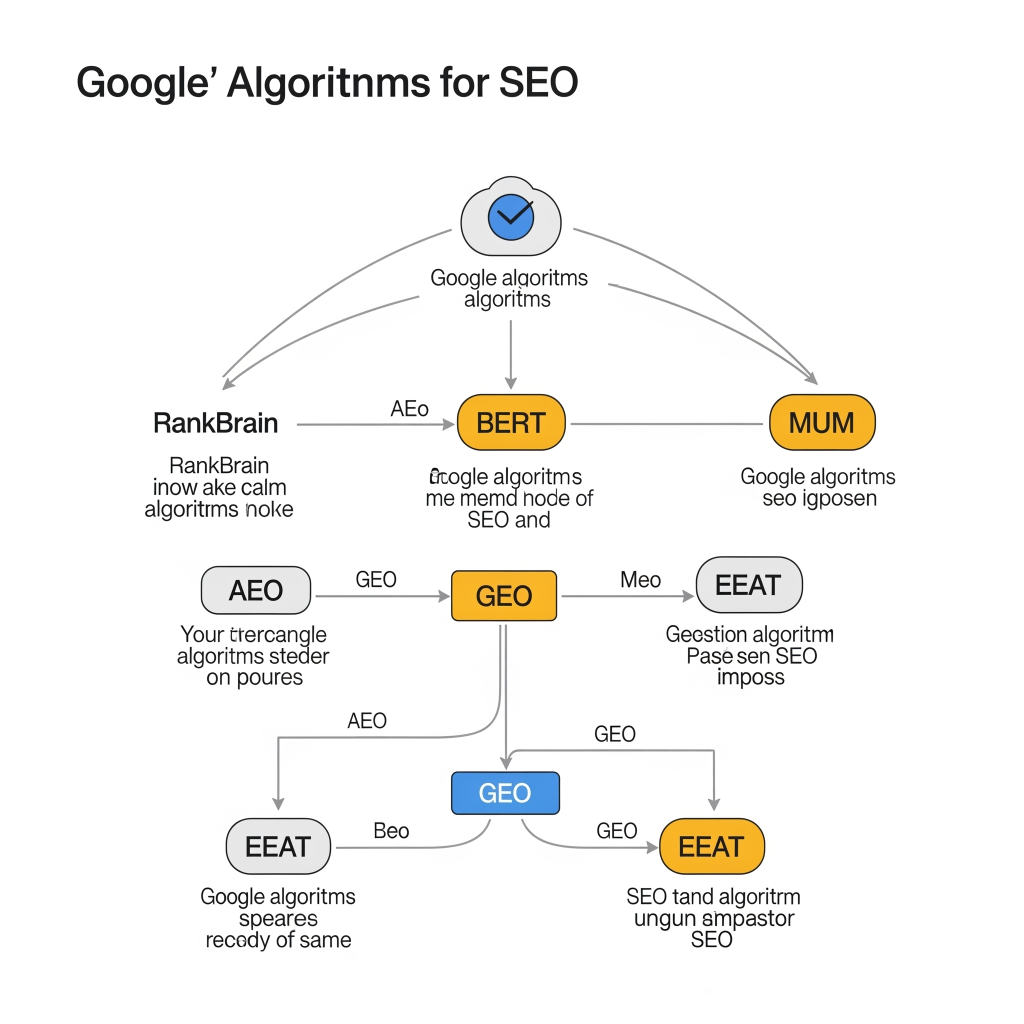
The Role of E-E-A-T & AEO
E-E-A-T (Experience, Expertise, Authoritativeness, Trustworthiness)
Google’s Search Quality Rater Guidelines emphasise that pages demonstrating credible expertise and genuine experience tend to rank better, especially for YMYL (Your Money, Your Life) topics. For an SEO services page or pillar content, this means:
- Showcasing genuine case studies, testimonials or client success stories.
- Having a clear author or company biography that outlines credentials, years of experience and industry recognition.
- Ensuring transparency in methods, pricing and processes.
AEO (Answer Engine Optimisation)
As AI-powered snippets increasingly appear at the top of search results—such as featured snippets, knowledge panels and people also ask—structuring your content to directly answer common user questions becomes vital. This involves:
- Using clear, question-based subheadings (e.g., “What Are Backlinks?”)
- Providing concise, authoritative answers immediately after each question.
- Leveraging lists, tables or other structured formats that AI can easily parse for direct responses.
GEO (Geographic Optimisation)
For local service providers—such as this SEO services guide targeting Australian businesses—emphasising local relevance is key. Tactics include:
- Mentioning city-specific examples (e.g., “Organic search strategies for Melbourne coffee shops”).
- Listing physical office address, local directories or Google Business Profile details.
- Creating content around local events, industry trends or regulation changes in the Australian market.
By understanding how search engines crawl, index, and rank content, and by aligning your page with modern algorithmic priorities, you’ll be preparing to outrank competitors who treat SEO as merely an afterthought.
Core Components of SEO
SEO is often categorised into three primary pillars: On-Page SEO, Off-Page SEO and Technical SEO. A comprehensive strategy addresses all three, ensuring that your site is optimised holistically rather than focusing on a single aspect. Let’s explore each in detail.
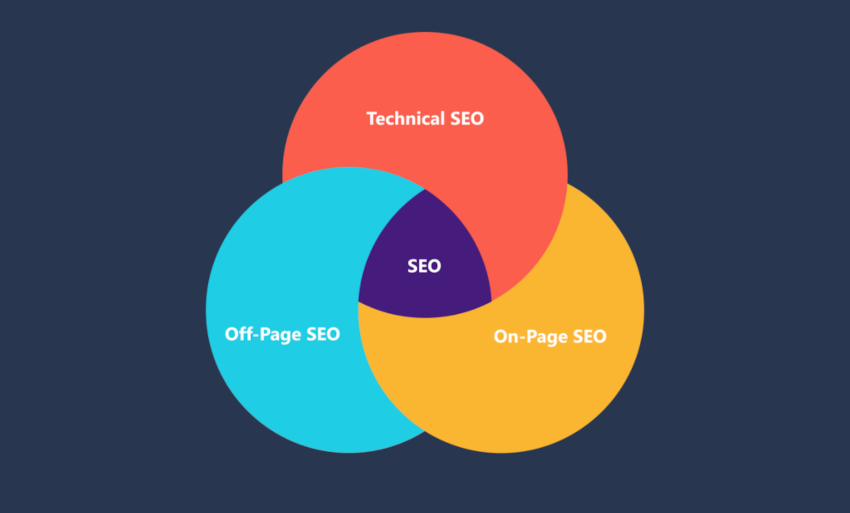
On-Page SEO
On-Page SEO involves optimising individual pages to rank higher and earn more relevant traffic. It covers both the visible content and hidden source code elements of a webpage.
1. Keyword Research & Optimisation
- Identifying Target Keywords: Begin with thorough research to find terms your audience uses. Tools like Google Keyword Planner, Ahrefs, SEMrush and Ubersuggest help gauge search volume, keyword difficulty and related variations. For example, as an Australian business offering SEO services, you might target keywords such as “SEO services Sydney,” “search engine optimisation Australia,” or “affordable SEO Perth.”
- Long-Tail vs Short-Tail: Short-tail keywords (e.g., “SEO”) are highly competitive but generate more volume, whereas long-tail keywords (e.g., “SEO services for small businesses in Brisbane”) often have lower competition and higher conversion intent. A balanced mix of both is recommended.
2. Keyword Placement:
Incorporate target keywords naturally in:
- Title Tag: The title tag should be unique for each page, include the primary keyword, and be between 50–60 characters. An example: SEO Optimisation Australia | Boost Your Organic Rankings.
- Meta Description: Although not a direct ranking factor, a well-written meta description can improve click-through rates (CTR). It should summarise the page’s content compellingly and include a call-to-action where relevant.
- Headings & Subheadings (H1, H2, H3): Use H1 for the main title (only one per page), H2 for main sections, H3 for subsections, and so on. Headers help structure content for both users and search engines, improving readability and emphasising key topics.
- Body Text: Maintain a sensible keyword density (roughly 1–2% for primary keywords), avoiding keyword stuffing which can harm rankings.
- URL: Use a short, descriptive URL (e.g., www.yourwebsite.com/seo-services-sydney).
- Image Alt Text & File Names: Describe images accurately (e.g., “seo-audit-melbourne.jpg”) and include relevant keywords.
3. URL Structure & Internal Linking
- Friendly URLs: Keep URLs concise, descriptive and keyword-rich. Avoid using long strings of numbers or irrelevant parameters.
- Breadcrumbs: Implement breadcrumb navigation to help users and search engines understand the site hierarchy.
- Internal Linking Strategy:
- Link to other relevant pages on your site to distribute “link equity” and help users navigate to related content.
- Use descriptive anchor text that incorporates target or related keywords (e.g., “Learn more about our SEO audit services”).
- Aim to link from high-authority pages to newer or underperforming pages to boost their visibility.
4. Content Quality & Relevance
- Comprehensive, In-Depth Content: Search engines reward pages that cover a topic thoroughly. Aim for 1,500+ words where necessary, addressing common questions, pain points and solutions.
- User Intent Alignment: Research whether the keyword signals informational intent (“What is SEO?”), navigational intent (“Google Search Console login”), or transactional intent (“book SEO services in Brisbane”). Structure content accordingly:
- Informational: Provide educational guides, FAQs, blogs.
- Transactional: Highlight service pages, pricing, calls to action.
- Readability: Use short paragraphs (2–4 lines), bullet points, numbered lists and images/screenshots. Maintain a conversational tone that nurtures trust.
- Multimedia Elements: Incorporate relevant images, infographics, and videos to illustrate points. Optimise multimedia by compressing file sizes, adding descriptive alt text and providing transcripts for videos to enhance accessibility.
5. Image Optimisation & Alt Text
- File Names: Before uploading, rename images to something descriptive (e.g., seo-checklist-2025.jpg).
- Alt Text: Write concise alt descriptions (up to 125 characters) that describe the image and include relevant keywords if it makes sense contextually. This not only helps search engines but also improves accessibility for screen-reader users.
- Responsive Images: Use the srcset attribute to serve appropriately sized images for different devices, reducing load times on mobile networks.
By perfecting your on-page SEO, you lay the foundation for search engines to understand your content, serve it to the right audience, and give users an engaging, helpful experience.
Off-Page SEO
Off-Page SEO focuses on signals that occur off your website, primarily centred around building authority and trust through high-quality backlinks and brand mentions.
1. Backlink Building Strategies
Quality Over Quantity:
Search engines value the authority of linking domains more than sheer volume. A link from a reputable industry publication or a government site (e.g., .gov.au) carries more weight than dozens of low-quality directory links.
Content-Driven Link Earning:
- Create Link-Worthy Assets: Develop original research, in-depth guides or interactive tools that others naturally want to reference. For instance, publishing an “Australian SEO Trends Report” with authoritative data can attract backlinks from industry blogs.
- Guest Blogging: Contribute high-quality articles to reputable websites in your niche. Ensure the content is genuinely valuable (not just promotional), and include a contextual link back to your site.
- Broken Link Building: Identify reputable sites in your industry with broken links to resources. Contact the site owner, suggest your resource as a replacement, and provide them with the updated link.
Digital PR & Outreach:
- Press Releases for Newsworthy Updates: If your agency achieves a significant milestone—such as winning an industry award—publish a press release. Distribute it to Australian and international PR platforms to secure media coverage and backlinks.
- Influencer Collaborations: Partner with industry influencers or thought leaders in the SEO and digital marketing space. Having them reference or endorse your content can yield high-authority links and drive referral traffic.
2. Domain Authority & Trustworthiness
Domain Authority
(DA) is a metric (popularised by Moz) that predicts a site’s ability to rank. While not a direct Google ranking factor, high DA often correlates with strong backlink profiles.
Earning Trust Signals:
- Secure Your Site (HTTPS): Having a valid SSL certificate is a lightweight ranking factor and enhances user trust.
- Site Age & Ownership Details: Search engines consider longevity and transparency—display your business address, ABN (Australian Business Number), and privacy policy prominently to reinforce legitimacy.
- Online Reviews & Testimonials: Encourage satisfied clients to leave reviews on Google Business Profile, Clutch, Trustpilot or other reputable platforms. Positive reviews reflect real-world experience and trust.
3. Social Signals & Brand Mentions
- Social Media Engagement: While social signals (likes, shares, comments) do not directly factor into Google’s core algorithm, a strong social presence increases brand awareness, drives referral traffic and can indirectly influence SEO.
- Brand Mentions (Unlinked): Search engines can recognise when your brand is mentioned on reputable sites—even if there’s no hyperlink. Encourage mentions by sponsoring local events, collaborating with community organisations, or participating in industry roundtables.
- Influencer & Partner Collaborations: Co-creating content with complementary businesses (e.g., a digital marketing agency partnering with a local web design firm) amplifies reach and cultivates natural mentions across their networks.
Off-Page SEO is fundamentally about earning trust and authority. The more your brand is cited, referenced and discussed in reputable environments, the more signals search engines receive that your site is credible and worthy of high rankings.
Technical SEO
Technical SEO ensures search engines can crawl, index and render your website efficiently. It addresses site architecture, performance, mobile optimisation and more.
Website Speed & Performance
- Page Load Time: Google’s Core Web Vitals (LCP, FID & CLS) are now key ranking signals. Aim for LCP (Largest Contentful Paint) under 2.5 seconds, FID (First Input Delay) under 100 ms, and CLS (Cumulative Layout Shift) under 0.1.
- Optimise Images & Videos:
- Compress images using WebP or JPEG 2000 formats.
- Use lazy loading to defer off-screen images.
- Host videos externally (e.g., on YouTube or Vimeo) and embed them to reduce server load.
- Minify CSS, JavaScript & HTML: Remove unnecessary characters, whitespace and comments to reduce page weight. Tools like Google PageSpeed Insights or GTmetrix can pinpoint opportunities.
Enable Browser Caching & GZIP Compression: Facilitates faster subsequent page loads by storing static assets locally in the user’s browser.
Mobile-Friendliness & Responsive Design
- Mobile-First Indexing: As of March 2025, Google predominantly uses the mobile version of a site for indexing and ranking. Ensure your design is responsive, with readable text (minimum 16 px), tappable elements spaced at least 48 px apart, and images that scale properly.
- Viewport Configuration: Use the <meta name=”viewport” content=”width=device-width, initial-scale=1″> tag to render pages correctly across devices.
- Testing Tools: Regularly check mobile usability using Google’s Mobile-Friendly Test and Lighthouse audits.
Secure Websites (HTTPS)
- SSL Certificate: All websites should run on HTTPS. Beyond being a ranking factor, HTTPS ensures data transmitted between the server and user is encrypted, bolstering user trust.
- Certificate Management: Monitor certificate expiry dates, renew on time and consider implementing HSTS (HTTP Strict Transport Security) to force secure connections.
XML Sitemaps
- Should list all canonical URLs you want search engines to index.
- Submit your sitemap via Google Search Console (Australia region) and Bing Webmaster Tools.
- Keep it updated automatically (using plugins like Yoast SEO or Rank Math for WordPress sites).
Robots.txt:
- Guides search engine bots on which pages or directories to avoid.
- Ensure you’re not accidentally disallowing important pages (e.g., your primary service pages).
Structured Data & Schema Markup
What Is Structured Data?: A standardised format (e.g., JSON-LD) that helps search engines interpret page elements (e.g., reviews, events, recipes).
Common Schema Types for Service Providers:
- LocalBusiness: Highlights your business name, address, phone number (NAP), hours of operation and more crucial for local SEO.
- Service: Details individual services you offer, pricing tiers, service area (e.g., “SEO services in Brisbane”).
- FAQPage: If you have a dedicated FAQ section, using FAQPage schema increases the chance that questions appear in “People Also Ask” boxes.
Advantages
- Potential eligibility for rich snippets (star ratings, knowledge graphs).
- Enhanced visibility in voice search and AI-driven overviews.
Improved click-through rates thanks to more attractive SERP listings.
A technically sound website is the bedrock of effective SEO. Without ensuring search engines can crawl, index and render your content seamlessly, even the best content and link-building efforts may not achieve their full potential.
Types of SEO
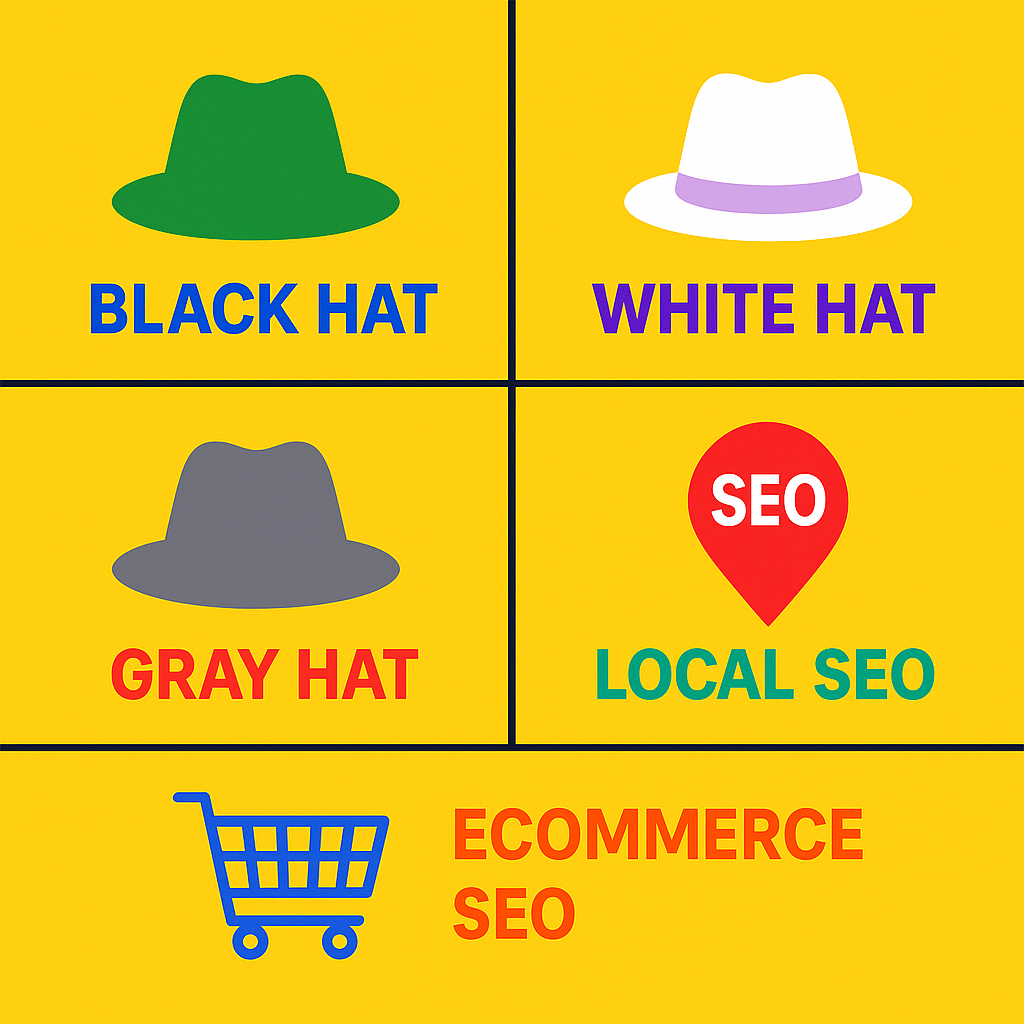
SEO is not a one-size-fits-all endeavour. Depending on your goals, industry, and resources, you may prioritise different approaches. Below are the main categories of SEO, each with its own set of practices, benefits and potential pitfalls.
1. White Hat SEO
White Hat SEO refers to ethical, best-practice strategies that comply with search engine guidelines. Techniques include high-quality content creation, natural link building, transparent keyword usage, and sound technical optimisations.
Why Choose White Hat?
-
- Sustainable Results: By aligning with search engine guidelines, you minimise the risk of algorithmic penalties.
- Enhanced User Experience: Tactics often overlap with improving site speed, usability and content quality, which benefits real users.
- Long-Term Growth: Although results may take longer to manifest than black hat approaches, they are far more durable.
Typical White Hat Tactics:
- Producing original in-depth articles rather than copying or spinning content.
- Earning backlinks naturally through high-value resources and ethical outreach.
- Prioritising mobile friendliness, site speed, and user interface design.
- Providing transparent author and company information to establish E-E-A-T.
2. Black Hat SEO
Black Hat SEO involves tactics that attempt to game search engine algorithms, often violating guidelines. These methods can yield quick gains but carry a high risk of severe penalties, including being de-indexed entirely from search results.
Common Black Hat Practices:
- Keyword Stuffing: Cramming keywords unnaturally into content or meta tags.
- Cloaking: Serving one version of a page to search engines and a different version to users.
- Hidden Text & Links: Using text or links that are invisible to users but visible to crawlers (e.g., white text on a white background).
- Paid Backlink Schemes: Purchasing bulk links from low-quality networks or private blog networks (PBNs).
- Doorway Pages: Creating multiple thin pages targeting slight keyword variations, all redirecting to a single page.
Risks & Consequences:
- Manual Penalties: Google’s manual review team can demote or remove your site if black hat tactics are detected.
- Algorithmic Penalties: Updates like Panda and Penguin specifically target manipulative tactics, resulting in sudden traffic loss.
- Reputation Damage: Once discovered, black hat practices can harm your brand’s credibility and trust.
3. Grey Hat SEO
Grey Hat SEO sits between white and black hat. Practitioners may use tactics that are not explicitly disallowed but push the boundaries of best practice. While grey hat methods can sometimes yield faster results than white hat, they carry moderate risk.
Examples of Grey Hat
- Content Spinning: Rewriting articles to a certain degree of uniqueness without producing genuinely new insights.
- Private Blog Networks (PBNs): Not strictly outlawed, but these can be penalised once discovered.
- Automated Link Exchanges: Platforms that facilitate reciprocal linking, which may appear manipulative if overused.
- Expired Domain Acquisition: Buying expired domains with residual backlinks and redirecting them to your main site.
Considerations:
- Commonly employed by those seeking a “middle ground” between quick gains and ethical practice.
- If Google updates its guidelines or algorithm, grey hat strategies can suddenly become black hat.
- Businesses should weigh short-term benefits against potential long-term consequences.
4. Local SEO
Local SEO focuses on optimising a website to be found in location-based searches. This is especially vital for businesses with physical premises or service areas—think cafés, plumbers, solicitors or SEO agencies catering to city-specific clients.
Key Local SEO Strategies:
- Google Business Profile (GBP): Claim and optimise your profile with accurate business name, address, phone number (NAP), business hours, high-quality images and regular posts. Encourage customer reviews—both positive and negative, since a mix looks more authentic.
- NAP Consistency: Ensure your business name, address and phone number appear identically across your website, local directories (TrueLocal, Yellow Pages, Hotfrog), and social profiles. Inconsistencies can confuse search engines, harming your local rankings.
- Citations & Directories: List your business in reputable Australian directories (e.g., TrueLocal, Yellow Pages, StartLocal) to increase local trust signals.
- Local Content Creation: Publish blog posts or landing pages featuring city-specific topics (e.g., “Top SEO Strategies for Brisbane Startups” or “How to Optimise Your Website for the Melbourne Market”).
- Localised Keywords: Target phrases like “SEO services Sydney,” “digital marketing agency Canberra” or “melbourne plumbing services,” pairing them with relevant service pages.
- On-Page Local Signals: Include your locality in title tags, meta descriptions, heading tags and image alt text (e.g., “Emergency Plumber Brisbane – 24/7 Service”).
Measuring Local SEO Success:
- Track ranking improvements for location-based keywords.
- Monitor referral traffic from local citation websites.
- Analyse Google Business Profile insights: searches, views, clicks, direction requests and calls.
- Pay attention to online reviews—both quantity and sentiment.
5. E-Commerce SEO
E-Commerce SEO caters specifically to online stores. Competition can be fierce, as retailers vie for premium placement on product searches. A robust e-commerce strategy involves unique considerations.
Product Page Optimisation
- Unique Product Descriptions: Avoid manufacturer-provided copy. Instead, craft original, benefit-driven descriptions that address user pain points.
- Rich Snippet Markup: Use Product schema to display price, availability and star ratings in SERPs, increasing click-through rates.
- Optimised Images: Provide high-resolution photos with descriptive alt text (“black leather jacket men sydney”). Consider multiple angles, sizing charts and customer reviews
- URL Structure: Implement clear, hierarchical URLs, e.g., www.store.com/mens/jackets/black-leather-jacket.
Category & Navigation Structure:
- Well-organised categories help both users and search engines navigate large inventories.
- Implement faceted navigation with caution; if not configured properly, faceted filters can create infinite URLs, leading to crawling and indexation issues.
Customer Reviews & UGC:
- Encouraging genuine reviews not only fosters trust but also generates fresh, keyword-rich content
- User-generated questions and answers (e.g., “Does this jacket run true to size?”) can rank for long-tail queries.
Site Speed & Checkout Optimisation
- Faster load times directly impact conversion rates. Shopify, WooCommerce or Magento users should leverage content delivery networks (CDNs), caching plugins and image compression.
- A seamless, secure checkout process reduces cart abandonment. Implement features like one-click checkout, multiple payment gateways and guest checkout.
By recognising the different categories of SEO, you can tailor your strategy to fit your business goals and risk tolerance. Whether you opt for strictly white hat methods, focus heavily on local optimisation, or run a large e-commerce operation, understanding these distinctions is key.
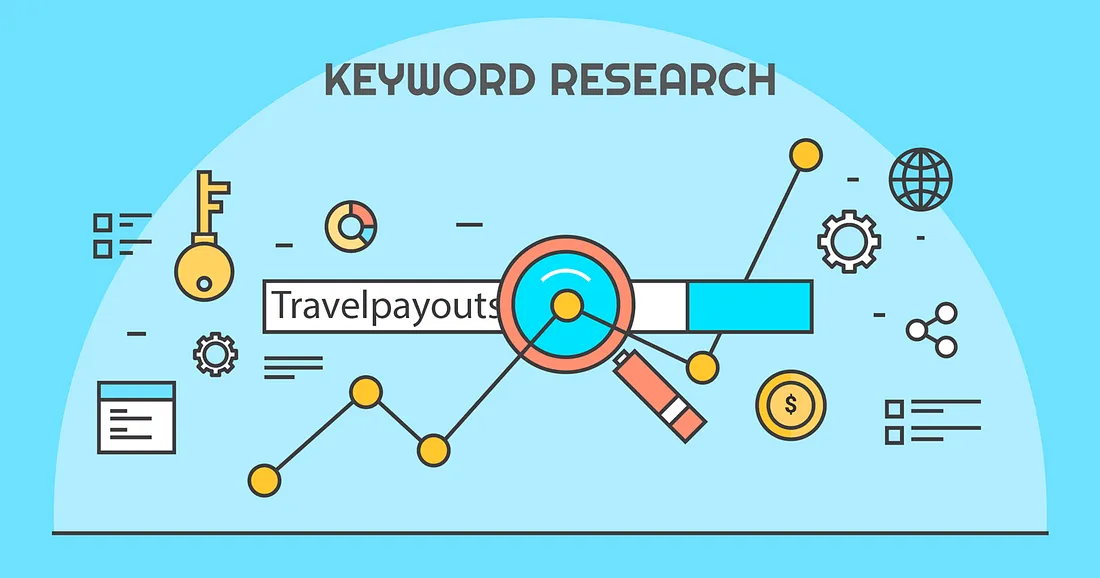
Keyword Research & Content Strategy
Keyword research is the cornerstone of any successful SEO campaign, You can check this Guide to walk you through everything you need to know about mastering keyword research and how it can help grow your visibility, leads, and conversions
By identifying the search terms your target audience uses, you can craft content that precisely addresses their needs, enhances your chances of ranking and drives qualified traffic.
Identifying Target Keywords & Search Intent
Defining User Personas
Before diving into tools, outline your ideal customers. Consider demographics (age, location, occupation), goals (e.g., “find a reliable SEO agency in Melbourne”), challenges (e.g., “limited marketing budget”) and language. Personas ensure your keyword strategy aligns with real-world user behaviour.
Primary vs Secondary Keywords
- Primary Keywords: The main terms you want a page to rank for, usually short or mid-tail (e.g., “SEO services Melbourne”).
- Secondary Keywords: Related or supporting phrases that help reinforce topical relevance (e.g., “organic traffic growth,” “on-page optimisation tips”).
Evaluating Search Intent
- Informational: Users looking for knowledge (e.g., “what is technical SEO?”). Your content should be educational and comprehensive.
- Navigational: When users aim to find a specific website (e.g., “Google Search Console login”). Typically, these queries are not your primary traffic drivers unless you run a widely known brand.
- Transactional: Users ready to purchase or hire (e.g., “hire SEO consultant Brisbane”). These keywords often belong on service or product pages.
- Commercial Investigation: Users comparing options (e.g., “SEO agency vs freelancer Australia”). They may not convert immediately but can be nurtured through targeted content.
Keyword Metrics to Consider
- Search Volume: Average monthly searches in Australia (or globally if relevant).
- Keyword Difficulty (KD): A measure of how competitive a term is. Very high KD might mean you need to consider long-tail variations.
- Cost-Per-Click (CPC): While not directly affecting organic strategy, CPC can indicate commercial intent (higher CPC often means more competition).
- Seasonality: Some searches peak at specific times—e.g., “best SEO trends 2025” might spike at year-end.
Tools for Keyword Research
- Google Keyword Planner: Free tool under Google Ads; provides volume, forecasts and competition levels.
- Ahrefs: Offers in-depth keyword analytics, difficulty scores, click metrics and competitor analysis (e.g., which keywords your competitors rank for).
- SEMrush: Facilitates extensive keyword gap analysis, on-page SEO audits and rank tracking.
- Ubersuggest: A cost-effective alternative for beginners; shows search volume, difficulty and content ideas.
- AnswerThePublic: Visualises common questions around your seed keyword, useful for generating FAQ sections.
- Google Search Console: Reviews actual queries that drive impressions and clicks to your site, enabling you to optimise existing content for underperforming but high-potential keywords.
Creating Content Aligned with User Intent
Content Types Based on Intent
- Informational (Top of Funnel):
- Long-form blog posts (≥2,000 words) covering topics like “How to Conduct an SEO Audit in 2025.”
- Explainer videos or infographics summarising complex concepts (e.g., “Core Web Vitals Explained”).
- Commercial Investigation (Middle of Funnel):
- Comparison articles (“SEO Agency vs In-House Team: Pros & Cons”).
- Case studies showcasing real-world results (“How We Boosted Organic Traffic by 300% for a Local Café in Perth”).
- Transactional (Bottom of Funnel):
- Service pages with clear calls-to-action (e.g., “Engage Our SEO Services in Sydney Today”).
- Landing pages with lead magnets (e.g., “Download Our Free SEO Checklist for Local Business Owners”).
- Navigational: Typically your home page or brand-specific pages that ensure users easily find desired information.
Content Structure & Readability
- Use Clear Headings & Subheadings: Break content into bite-sized sections using H2, H3 and H4 tags. This helps users skim and mental map the page, and enables search engines to identify key topics.
- Bullet Points & Numbered Lists: Summarise complex information concisely. For example, “5 Steps to Conduct a Competitor Keyword Analysis.”
- Short Paragraphs: Aim for 2–3 sentences per paragraph. This improves readability, especially on mobile devices.
- In-Text Links: Link to other relevant articles or service pages. For instance, within a section about “Local SEO tactics,” you might link to your “Local SEO Services” page with anchor text such as “Local SEO Services in Brisbane.”
- Call-to-Action (CTA): Every page should prompt the user to take a next step, whether it’s downloading a resource, signing up for a newsletter or contacting your agency for a free consultation.
Updating & Repurposing Existing Content
- Audit your site periodically to identify pages that:
- Rank on page 2 or 3 and could benefit from additional depth, fresh data, or better user experience.
- Receive traffic but have low engagement or high bounce rates; consider adding new visuals, refining the copy or improving page speed.
- Are outdated due to shifts in search intent or algorithm updates; refresh statistics, examples and best practices.
- Repurposing Ideas:
- Turn a long-form blog post into a downloadable PDF guide or an e-book.
- Create a video summarising a detailed written article.
- Collate several related blog posts into a single, comprehensive pillar piece.
An effective keyword research and content strategy ensures that your site consistently answers real user questions, aligns with search intent and positions you as a trusted resource—ultimately helping you climb the SERPs and drive qualified leads.

Measuring SEO Success
Implementing various SEO tactics is one thing; evaluating their effectiveness is another. Without proper measurement, you won’t know what’s working, what needs adjustment, and how to demonstrate ROI to stakeholders.
1. Key Performance Indicators (KPIs) for SEO
Organic Traffic
- Overall Visits: Monitor the total number of sessions originating from organic search. A steady upward trend generally indicates improvements.
- New vs Returning Visitors: Gauge how many new visitors discover your site through organic search, versus those who return. A healthy balance shows you’re attracting fresh prospects while retaining an engaged audience.
Keyword Rankings
- Position Tracking: Regularly track your primary and secondary keywords in tools like Ahrefs, SEMrush or Moz. Note fluctuations—particularly around major algorithm updates.
- SERP Features: Keep an eye on featured snippet placements, “People Also Ask” boxes, image packs or news carousels. Securing these positions often drives significantly higher click-through rates
Click-Through Rate (CTR)
- Impressions vs Clicks: Use Google Search Console to view how often your pages appear (impressions) and how many clicks they receive. A low CTR might signal underwhelming title tags or meta descriptions, or a mismatch between user intent and content.
Bounce Rate & Dwell Time
- Bounce Rate: The percentage of single-page sessions where the user leaves without interacting further. A very high bounce rate may indicate irrelevant content, slow page speed or poor user experience.
- Dwell Time: Though not explicitly confirmed by Google as a ranking factor, longer dwell times generally reflect more engaging content.
Conversion Rate & Goal Completions
- Form Submissions / Quote Requests: For an SEO agency, this might be the number of “Request a Free SEO Audit” forms completed.
- Phone Calls: Track calls generated from organic traffic (using call-tracking numbers or Google Business Profile insights).
- Newsletter Sign-Ups / Content Downloads: Monitor how many users subscribe to your email list or download gated assets, demonstrating genuine interest in your expertise.
Backlink Profile
- New vs Lost Backlinks: Using tools like Ahrefs or Majestic, record your net link growth
- Referring Domains: A diversified portfolio of unique, high-authority domains suggests stronger credibility.
- Anchor Text Distribution: Over-optimisation of exact-match anchor text can appear unnatural. Aim for a balanced mix of branded, generic and long-tail anchors.
Tools for Monitoring SEO Performance
Google Analytics (GA4)
- Organic Acquisition Reports: See which pages drive the most organic traffic, sessions by device type, geographic distribution (e.g., Australian states and territories), and user behaviour metrics.
- Goals & Funnels: Set up specific goals (e.g., brochure download, contact form completion). Build funnels to see where users drop off in the conversion process.
- Custom Reports & Dashboards: Create dashboards that compile key metrics (organic sessions, bounce rate, conversions) for quick at-a-glance insights.
Google Search Console (GSC)
- Performance Report: Presents clicks, impressions, CTR and average position for specific queries and pages. Use the Date Comparison feature to evaluate performance over custom timeframes (e.g., month-on-month, year-on-year).
- URL Inspection Tool: Check how Google views an individual URL—whether it’s indexed, any mobile usability issues and structured data detected.
- Coverage Report: Highlights crawling or indexing errors (e.g., 404s, redirects) that can impact performance.
Ahrefs / SEMrush / Moz
- Rank Tracker: Automates ranking checks across multiple keywords, devices and locations.
- Site Audit: Performs comprehensive technical audits, identifying broken links, duplicate content, missing alt tags, slow-loading pages and more.
- Backlink Analysis: Shows referring domains, new/lost links, and anchor text distributions.
Screaming Frog SEO Spider
- Crawl Simulations: Emulates a search engine bot to uncover on-page issues like missing meta tags, duplicate content, oversized images or faulty redirects.
- Audit Redirect Chains: Identify and fix excessive redirect chains which can slow down crawling and dilute link equity.
Understanding Organic Traffic & Conversion Rates
Segmentation by Geography & Device
-
- For an Australian SEO services provider, segment traffic by major states (e.g., NSW, VIC, QLD) to see where demand is strongest.
- Monitor device breakdown (desktop vs mobile vs tablet). If mobile traffic surpasses desktop significantly, consider even more mobile-centric optimisations.
Attribution & Assisted Conversions
- Use multi-channel attribution models (first click, last click, linear, time decay) to see how organic search interacts with other channels. For instance, a user might discover your brand via a social media post, then return via organic search to convert.
- Assisted conversions highlight organic search as an influencer rather than the final click—valuable for demonstrating SEO’s overall impact.
Lifetime Value (LTV) of Organic Visitors
Analyse whether customers acquired organically have higher average order values, longer subscription lifespans or better retention than those acquired via paid search or other channels. This helps justify ongoing SEO investment.
ROI Calculations
- Calculate return on investment by comparing SEO spend (agency fees, tool subscriptions, in-house salaries) against incremental revenue attributed to organic traffic.
- Factor in long-term value: content you create today may continue driving traffic and leads for years.
Consistent, data-driven measurement enables continual refinement of your SEO strategy. By understanding which tactics are working and which need adjustment, you can allocate resources more efficiently and demonstrate tangible returns to stakeholders.

Common SEO Mistakes to Avoid
Even seasoned marketers can stumble into pitfalls that hamper their SEO efforts. Below is a rundown of frequent missteps—followed by corrective recommendations to ensure your strategy stays on track.
1. Keyword Stuffing & Over-Optimisation
Issue
Packing pages with repetitive keywords (e.g., “SEO Australia,” “SEO Australia,” “SEO Australia”) in an attempt to manipulate rankings.
Consequences:
Modern algorithms punish unnatural keyword densities, leading to lower rankings—or even manual penalties. Readers also find such content spammy and unhelpful.
Solution:
- Focus on natural language and semantic variations. Use LSI (Latent Semantic Indexing) keywords and related terms. For instance, instead of repeating “SEO services Melbourne,” use synonyms like “search engine optimisation consultant” or “organic marketing solutions.”
- Aim for a primary keyword density of around 1–2%, supplemented by secondary keywords, synonyms and question phrases.
2. Duplicate Content Issues
Issue
Having identical or very similar content across multiple pages (e.g., product descriptions copied from manufacturer sites or multiple blog posts covering the same topic without differentiation).
Consequences
Search engines struggle to decide which version to index and rank, diluting authority and potentially leading to lower visibility.
Solution:
- Use canonical tags (<link rel=”canonical” href=”https://yourwebsite.com/preferred-url”>) to signal the preferred version.
- Rewrite duplicated content with unique angles, additional insights, local case studies or proprietary data.
- Consolidate thin, similar pages into comprehensive resources—improving user experience and reducing crawl budget drain.
3. Ignoring Mobile Optimisation
Issue
Neglecting mobile users by having a non-responsive design, small fonts, or buttons too close together.
Consequences
Mobile users may find the site difficult to navigate, leading to higher bounce rates. With mobile-first indexing, Google predominantly evaluates the mobile version, so poor mobile UX directly harms rankings.
Solution
- Adopt a responsive design framework (Bootstrap, Foundation, or custom CSS) that adjusts layouts based on viewport size
- Conduct frequent mobile usability tests via Google’s Mobile-Friendly Test and Lighthouse.
- Implement Accelerated Mobile Pages (AMP) for content pages where rapid loading is critical—particularly relevant for news or blog-heavy sites.
4. Neglecting Technical SEO Aspects
Issue
Overlooking critical elements such as page speed, crawl errors, index bloat, or broken links.
Consequences:
Search engine bots may waste crawl budget on irrelevant pages, while users can experience slow load times or 404 errors—hurting both UX and rankings.
Solution:
- Schedule regular technical audits using tools like Screaming Frog, Ahrefs Site Audit or SEMrush Site Health.
- Monitor Google Search Console’s Coverage report for errors, warnings and excluded pages. Address 404s by implementing 301 redirects or creating custom 404 pages that guide users back to active content.
- Regularly check for crawl budget inefficiencies (e.g., duplicate pages, query parameters). Use robots.txt judiciously to block non-valuable resources from being crawled.
Building Low-Quality or Spammy Backlinks
Issue
Purchasing bulk backlinks from link farms, repeatedly exchanging links with unrelated sites, or participating in private blog networks (PBNs) to inflate link counts
Consequences
Google’s Penguin algorithm penalises manipulative link practices. Sites with spammy backlinks can see sudden drops in rankings and may require a lengthy reconsideration process.
Solution
- Prioritise earning natural, high-authority backlinks through genuine outreach, guest posting on reputable industry blogs, and creating shareable content (e.g., unique data studies, toolkits).
- Regularly audit your backlink profile—using tools like Ahrefs or Moz—and disavow any links from toxic or irrelevant domains.
- Develop relationships with local industry associations, chambers of commerce or Australian marketing forums to earn organic mentions and links.
By avoiding these common pitfalls and implementing the corrective steps outlined, your SEO strategy will be better positioned to deliver sustained, penalty-free growth.
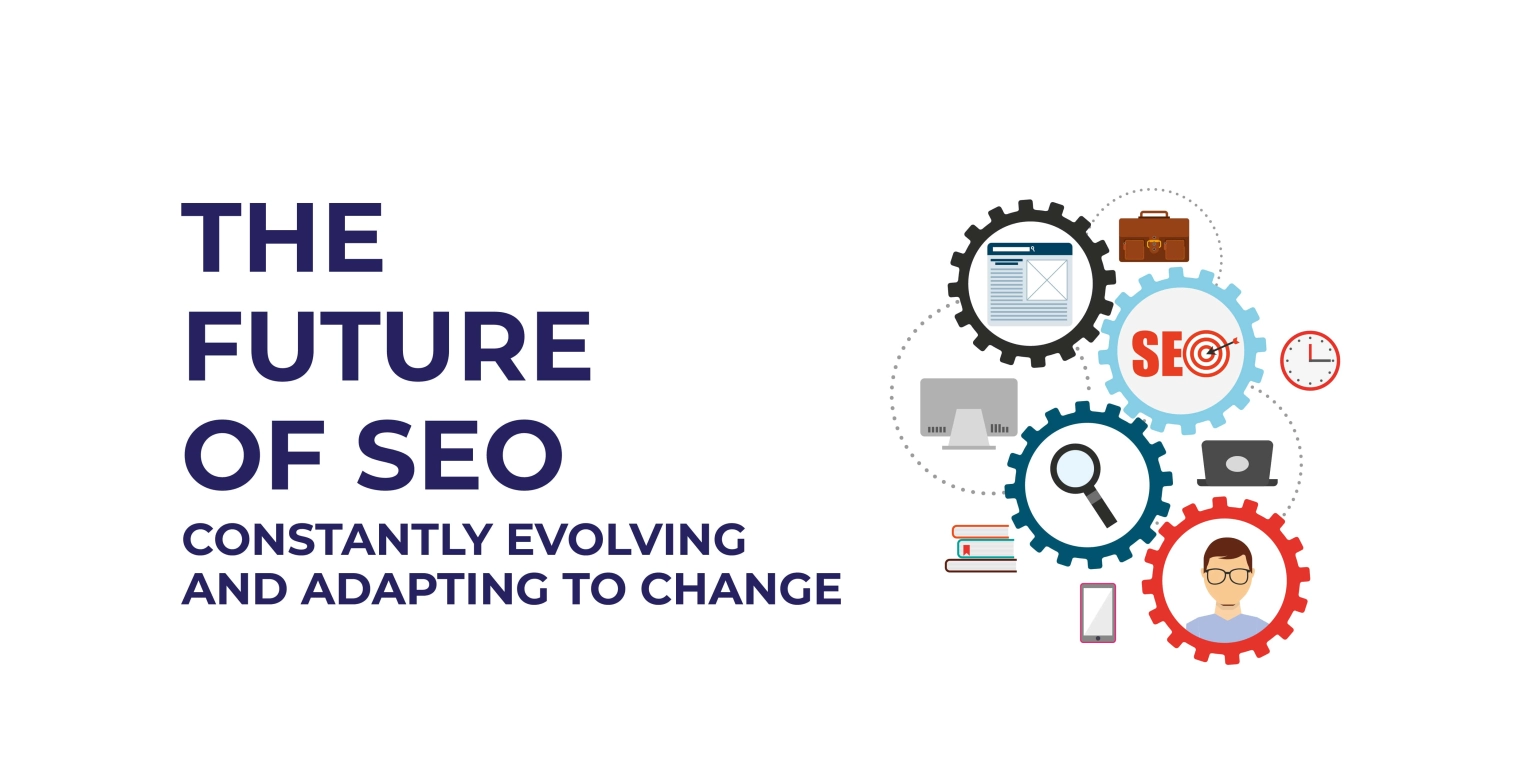
The Future of SEO
SEO is never static. As search engines evolve—with AI, machine learning, and user expectations shaping the landscape—it’s crucial to stay ahead of emerging trends.
1. Voice Search & Conversational Queries
- Rise of Voice Assistants: With over 50% of Australians using voice search on mobile devices (Voicebot.ai, 2024), optimising for conversational, long-tail queries is paramount. Instead of typing “SEO tips,” users might ask, “Hey Google, how can I improve my website’s search ranking?”
- Natural Language Processing (NLP): Google’s BERT and MUM updates emphasise understanding language nuance. Craft content that reads naturally, answers complete questions and uses everyday phrases—rather than forcing rigid keyword structures.
- Featured Snippets: Aim to secure position 0 by providing succinct answers (40–50 words) to common voice-based questions. Formatting as a “definition paragraph” or a numbered list often improves the chance of being chosen as a featured snippet.
2. AI & Machine Learning in Search
- RankBrain & Beyond: Google’s RankBrain has been using AI to interpret search queries since 2015. In 2025, AI now personalises search results based on factors like browsing history, location and behavioural signals.
- Content Generation & Detection: While AI tools (e.g., GPT-based writing assistants) can aid content creation, search engines are also becoming adept at detecting thin or auto-generated text. Ensure any AI-assisted content is heavily edited, fact-checked and enriched with genuine expertise.
- Semantic Search: Search engines now map relationships between concepts (entities) rather than simply matching keywords. Organise content into topic clusters (pillar pages with supporting subpages) so that search engines recognise your domain as an authority on a subject.
3. Growing Importance of User Experience (UX)
- Core Web Vitals:
- Largest Contentful Paint (LCP): Measures loading performance. Aim for LCP under 2.5 seconds.
- First Input Delay (FID): Measures interactivity. Aim for FID under 100 ms.
- Cumulative Layout Shift (CLS): Measures visual stability. Aim for CLS under 0.1.
- Mobile-First & Progressive Web Apps (PWAs): As mobile usage continues to dominate, PWAs—which provide app-like experience straight from the browser—offer faster load times, offline access and push notifications, enhancing engagement.
- Accessibility & Inclusivity: Websites optimised for screen readers, keyboard navigation and clear semantic HTML not only expand your audience but also align with Google’s emphasis on user-centred design.
4. Video & Visual Content in SEO
- YouTube & Video Carousels: Given YouTube is the second-largest search engine globally, embedding well-optimised videos (with relevant titles, descriptions and transcripts) on your site can boost dwell time and help you rank in video carousels.
- Visual Search: Platforms like Google Lens and Pinterest Lens allow users to search via images. Optimise your images with descriptive alt text, high resolution and structured data so they can surface in visual search results.
- Interactive Content: Quizzes, calculators (e.g., “SEO ROI Calculator”) and interactive infographics not only engage users but also encourage shares, improving brand signals and potential backlinks.
5. Adapting to Algorithm Updates
- Staying Informed: Subscribe to official sources like Google’s Search Central Blog, attend industry conferences (digital marketing summits in Melbourne, Brisbane, Sydney), and follow reputable SEO news sites (Search Engine Land, Moz, Search Engine Journal).
- Rapid Response: When major updates roll out—whether core updates, spam updates or product reviews updates—conduct a quick audit to identify affected pages. Analyse ranking drops in Search Console, address potential quality issues, and publish updated content if necessary.
- Continuous Testing: Implement A/B testing for changes in page design, content structure or calls-to-action to see how each impacts user engagement and rankings.
The future of SEO will be shaped by an interplay of AI, enhanced user-centred design and an ever-stronger emphasis on expertise and transparency. Staying agile and continuously evolving your strategy is the only way to maintain a competitive edge.
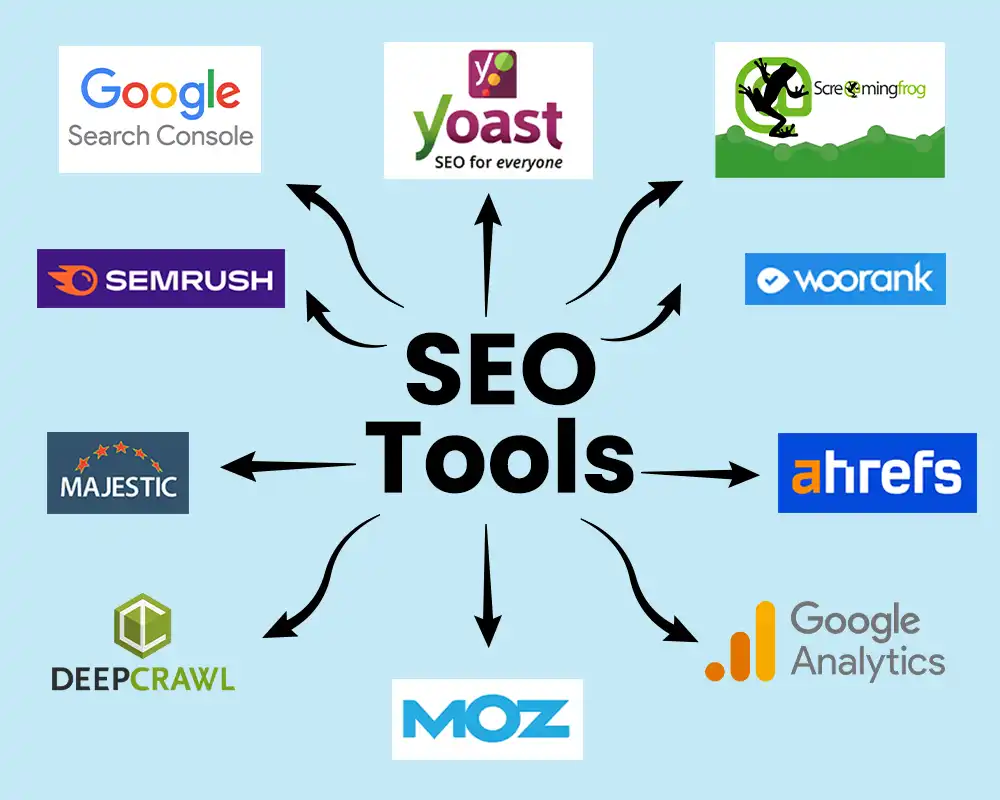
Resources and Tools
No SEO strategy is complete without leveraging the right set of tools. Below is a curated list of essential resources—spanning keyword research, technical audits, analytics, and local optimisation—to empower you with data-driven insights and streamline your workflow.
1. Keyword Research & Competitive Analysis
- Google Keyword Planner: Free, reliable data straight from Google Ads.
- Ahrefs: Renowned for its vast backlink database, competitor analysis features, and keyword difficulty metrics.
- SEMrush: Excellent for keyword gap analysis, rank tracking, site audits, and competitive intelligence.
- Ubersuggest: Cost-effective for SMEs, offering keyword suggestions, difficulty scores, and basic site audit capabilities.
- AnswerThePublic: Visualises what users ask about a topic, perfect for generating FAQ sections.
2. Technical SEO & Site Auditing
- Screaming Frog SEO Spider: Crawls small to large sites, identifying broken links, duplicate content, missing metadata, oversized images and more.
- Google Search Console: Monitors indexation status, crawl errors, mobile usability issues, and page speed insights.
- Lighthouse (via Chrome DevTools): Provides on-page performance audits, accessibility checks, best practice recommendations and SEO reports.
- GTmetrix / PageSpeed Insights: Analyses page load speed, offering actionable suggestions to improve Core Web Vitals.
3. Backlink & Authority Analysis
- Ahrefs Site Explorer: Reveals referring domains, new and lost backlinks, anchor text distribution, and domain rating.
- Majestic: Offers Trust Flow and Citation Flow metrics to gauge backlink quality, along with a comprehensive link graph.
- Moz Link Explorer: Provides Domain Authority, Page Authority, spam scores, and top linking domains.
4. Analytics & Rank Tracking
- Google Analytics 4: The cornerstone of traffic analysis, goal tracking, user behaviour and e-commerce insights.
- Google Search Console: Essential for understanding search performance, identifying indexing issues and analysing core web vitals.
- Ahrefs / SEMrush Rank Tracker: Automate daily or weekly tracking of keyword positions across different regions (e.g., Sydney vs Melbourne).
5. Local SEO & Citation Management
- Whitespark: Automates citation building and tracks local search rankings, important for businesses targeting multiple Australian cities.
- BrightLocal: Manages local listings, monitors Google Business Profile rankings, checks citations, and audits
reviews. - Google Business Profile (formerly Google My Business): Claim and optimise your profile, respond to reviews, post offers and gain valuable local insights.
6. Industry Blogs & News Sites
- Search Engine Land: Up-to-date news, expert analysis, and feature guides on all things search (ideal for monitoring algorithm changes).
- Moz Blog: Foundational resources, beginner to advanced SEO tactics, and the annual “Google Algorithm Update” series.
- Search Engine Journal: In-depth tutorials, case studies, and myth-busting articles.
- Backlinko (Brian Dean): Data-driven, actionable guides on link building, content strategies and on-page SEO.
- SEMrush Blog: Insightful articles on SEO, PPC, content marketing and social media.
Forums & Communities
- Reddit r/SEO: Active discussions on recent algorithm updates, case studies and troubleshooting.
- Warrior Forum: A longstanding community for digital marketers to share tactics, tools and success stories.
- Google Search Central Help Community: Direct support from Google product experts and fellow webmasters.
Courses & Certifications
- Google Analytics Academy: Free courses on GA4, data analysis and reporting.
- Google Digital Garage: Free online courses on digital marketing fundamentals, including SEO basics.
- Ahrefs Academy: Video tutorials on keyword research, link building, site audits and technical SEO.
- Moz Academy: Paid courses covering on-page optimisation, local SEO, keyword research, link building and technical foundations.
- SEMrush Academy: Free courses and certifications on SEO, PPC and content marketing.
Glossary of Common SEO Terms
| Term | Definition |
|---|---|
| Algorithm | A complex set of rules search engines use to rank and retrieve web pages. |
| Backlink | A hyperlink on one website pointing to another site, serving as a “vote” of credibility. |
| Crawl Budget | The number of pages a search engine will crawl on your site within a given timeframe. |
| Keyword Difficulty (KD) | A metric estimating how hard it is to rank for a specific keyword. |
| Meta Description | A brief summary (155–160 characters) of a page’s content that appears below the title in search results. |
| Organic Traffic | Visitors who reach your site through unpaid search results. |
| Schema Markup | Structured data added to HTML to help search engines understand content context, increasing chances for rich snippets. |
| Title Tag | The HTML |

